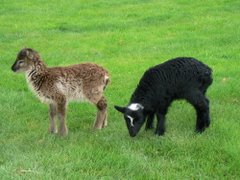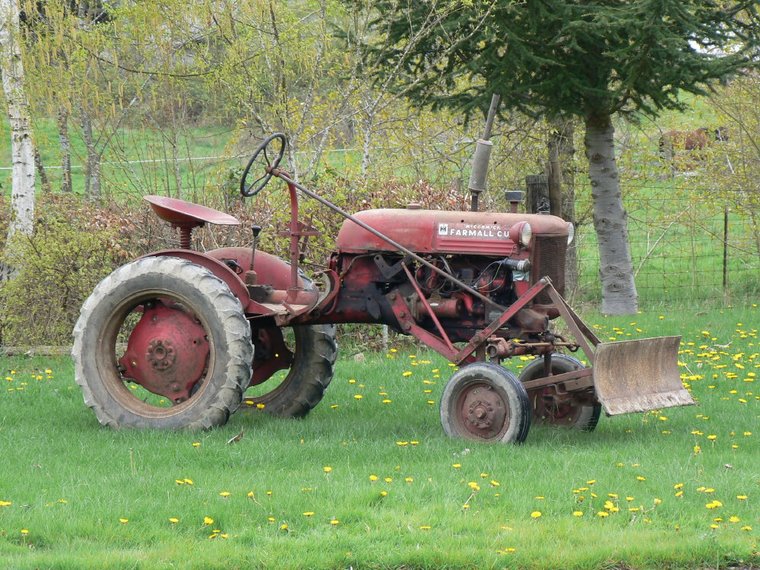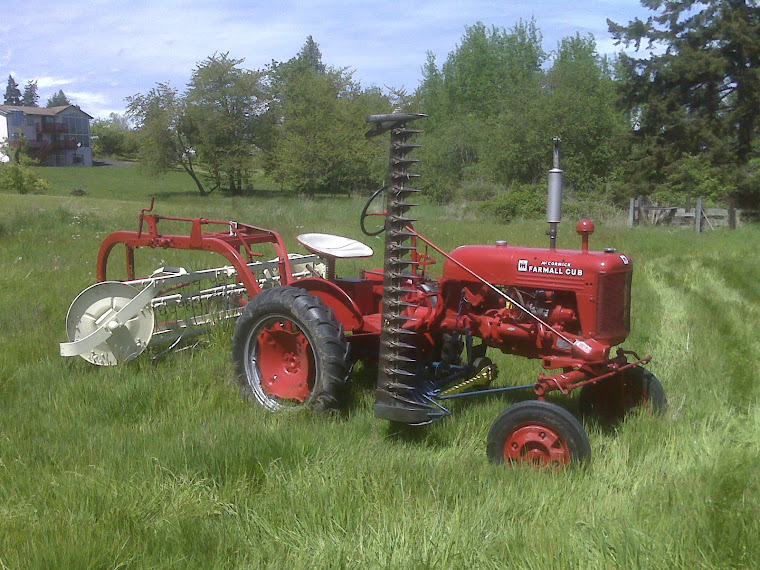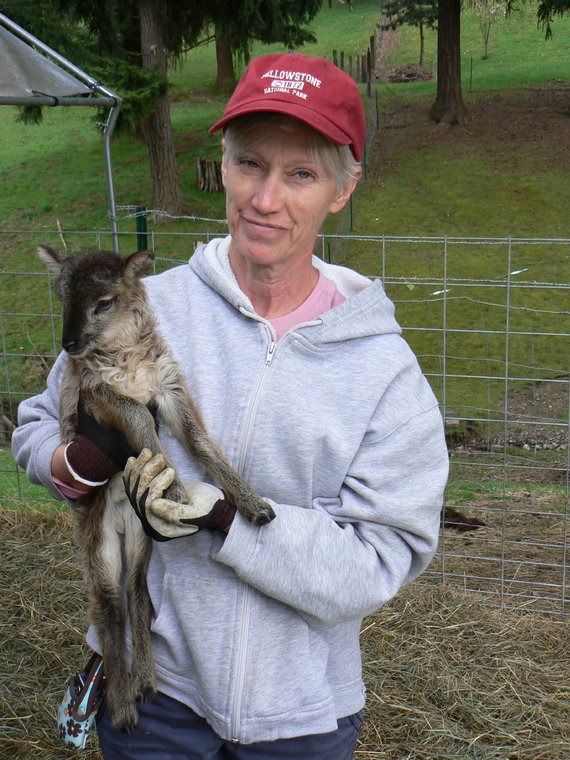But the best part is the white spotting. Many know that one of our flock breeding goals is to extend the degree of white spotting on a self-colored black Soay. As my developing theory on the extent of white spotting would predict, this new ram lamb (now named Chilcoot) does indeed have more white than either of it's parents.
Here is a photo of the dam, Bunny, and ram lamb,
Woodland Creek Chilcoot - r '07.

Here is a photo of the sire, Woodland Creek Pepper '06.

The only unfortunate part, for our breeding program, is that it is a ram lamb. (We now have 6 Black and White rams... way more than we need!).
While white spotting is fairly common in Soays in North American, white spotting on top of self-colored blacks is not very common. Of all the self-colored black Soays with white spotting I have known about ever produced in North America, this ram has the second-largest extent of white spotting I've ever seen. Note how the pattern of extension of white spotting in successive generations follows the (roughly) predicted pattern - first a poll "wisp" (like Chilkoot's grand-sire Kvasir has), then a poll spot (like Chilkoot's sire Pepper has), then usually a poll and forehead spot (like Bunny's '06 ram lamb Obsidian has), then these merge into a "crown" (like this lamb Chilkoot has), and then I predict next generation a blaze (note that this lamb has a tiny white spot on his nose - almost made a blaze), and eventually a white tail tip, and / or white "socks" on one or more feet, and so on.
To be clear here, the white spotting extent does not change on any lamb once it is born - I mean above that the extent of white spotting changes with each generation of offspring - not on any lamb once it is born.
The greatest extent of white spotting that I've ever seen documented on a self-colored black Soay in North America was Blue Mountain Thunder - e '01. She is the lamb in center of photo below, courtesy Kate Montgomery. Note that Thunder had a white tail tip too - the next place I expect white spotting to show up as I continue to "add white".

Note how similar the white markings are on my new lamb and Thunder, above. Thunder's dam was Blue Mountain Thumper (who lives here at Woodland Creek now). Thumper is also the dam of Pepper '06, the sire of my new ram lamb. And guess what - she is also the dam of Bunny '02 - the dam of my new ram lamb. Of course this didn't all happen by chance - it has taken years of seaching out and obtaining the stock to replicate the pattern shown in Thunder. (Thunder met an unfortunate early end at Blackhorse farm before she was registered or ever had offspring.)










+23-Apr-07.JPG)
















